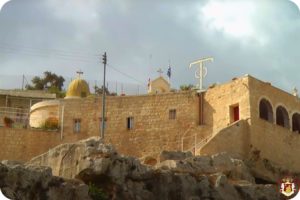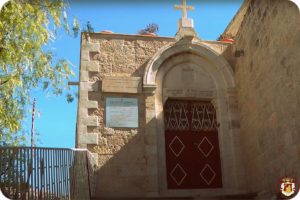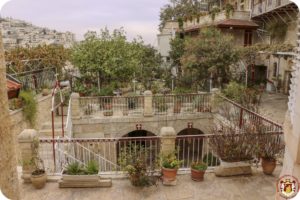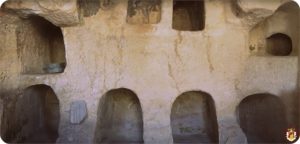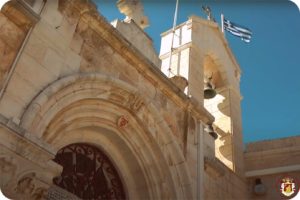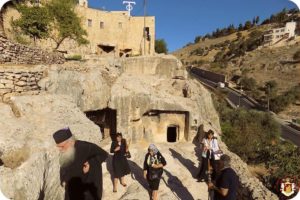THE MONASTERY OF ST. ONUPHRIUS ON THE FIELD OF BLOOD
An article by: Heba Hrimat
“And the chief priests took the silver pieces, and said, It is not lawful for to put them into the treasury, because it is the price of blood. And they took counsel, and bought with them the potter’s field, to bury strangers in. Wherefore that field was called, The field of blood, unto this day.” Matthew 27:6-8
Akeldama, an Aramaic name meaning the field of blood, is the piece of land known as the potter’s field, according to the Holy Gospel, which the priests bought with the thirty pieces of silver that Judas Iscariot returned, and they allotted it to be a cemetery for strangers – the non-Jewish.
It is the same place where Judas hung himself, after he was filled with remorse and tormented with guilt following his betrayal of the Lord Jesus Christ, which eventually led to His crucifixion. Thus, it was called “Field of Blood” and the ancient name lived on. (Matthew 27:8 and Acts 1:19).
The Greek Orthodox monastery of St. Onuphrius stands today on the same plot of land known as the Potter’s Field. The traditional site of this field, which dates back to the era of Jerome in the fourth century, is on the southern side of the Hinnom Valley in Jerusalem, and may have been the same or close to it, because the area contains porcelain stone. It was used as a burial place for the dead for a long time, and many Crusaders were buried there as well.
The hills on which the monastery stands are full of caves and burial tombs, some of which hold the bones of pilgrims of past centuries who came to Jerusalem but died before they could return to their homelands. Among the many tombs in the monastery is the tomb of Saint Juvenalius, the first Orthodox Patriarch of Jerusalem (442-458).
In the Byzantine era, many monks and hermits took a number of these caves as homes and places for worship. Sixteenth century tradition suggests that eight of the apostles hid there after Christ was captured in Gethsemane before his crucifixion.
The Monastery of Saint Onuphrius, built in 1874 over the ruins of a former church, now can be seen occupying the southern facade of the valley, facing Mount Zion and the walls of the old city.
The monastery bears the name of the monk Saint Onuphrius, who came from Egypt to the Holy Land during the third or fourth century, and was ascetic in a cave in the desert for over sixty years in strict isolation.
Besides his holiness, Onuphrius was famous for his very long and luxurious beard, which was his only clothing beside an apron of leaves, as he can be seen portrayed in his icons.
Today, the monastery is being taken care of by a small number of Greek Orthodox nuns from the Jerusalem Patriarchate.
The annual feast of St. Onuphrius is held in his monastery on June 25 every year, in a beautiful divine liturgy that is normally led by His Beatitude Patriarch of the Holy City, Metropolitans and Fathers from the Brotherhood of the Holy Sepulchre.
